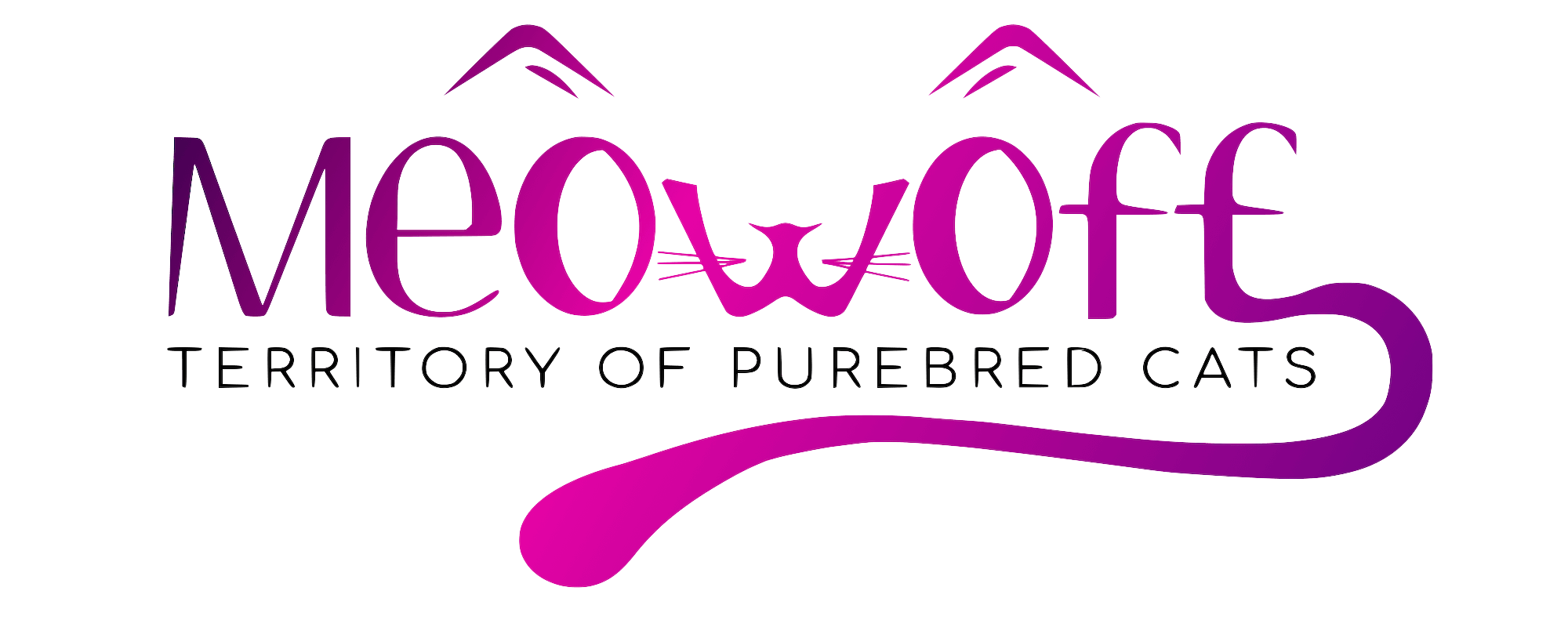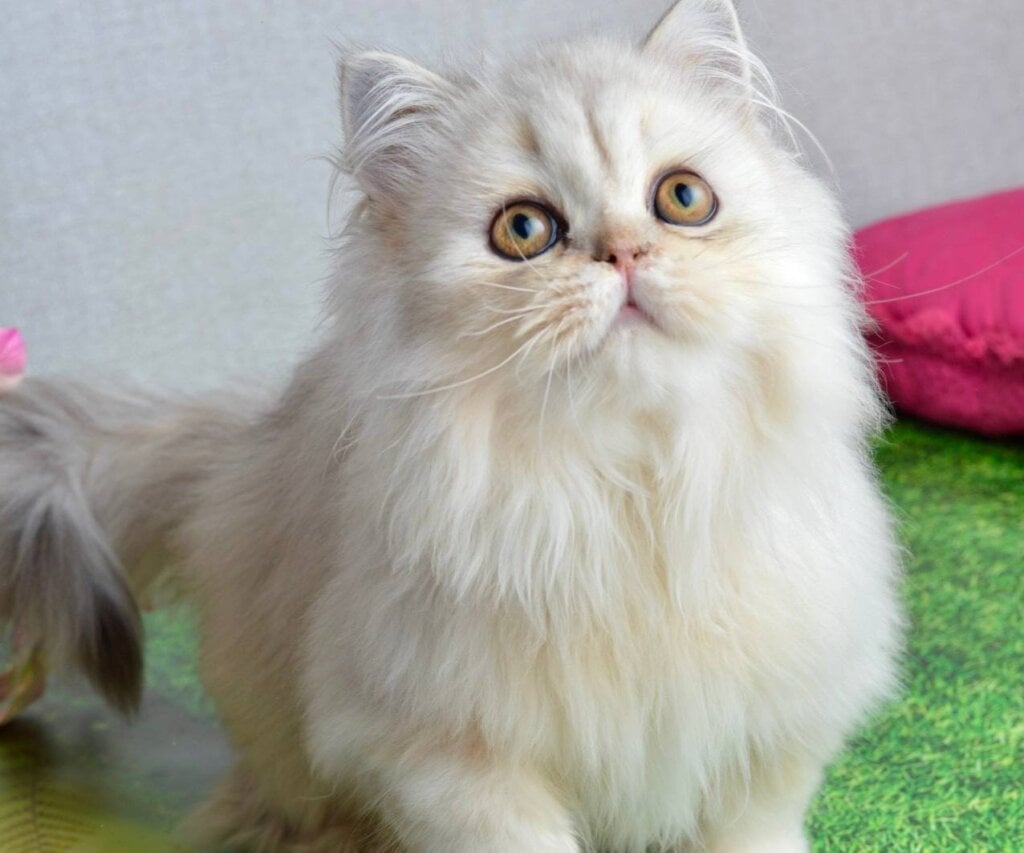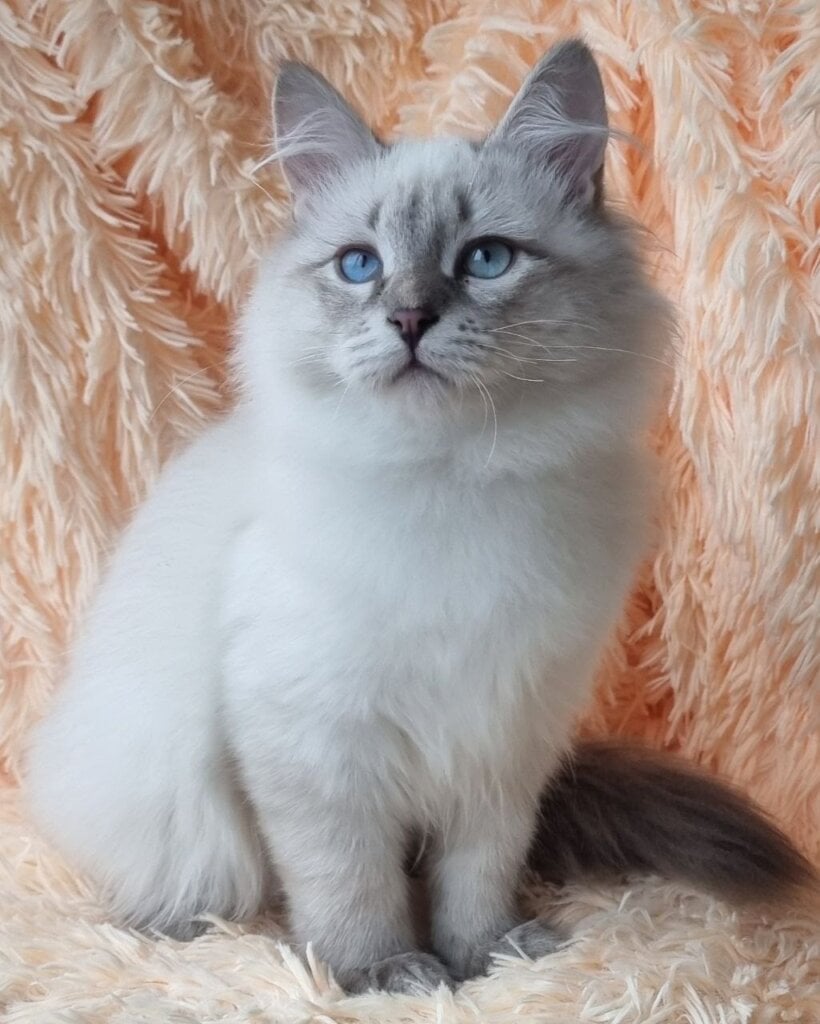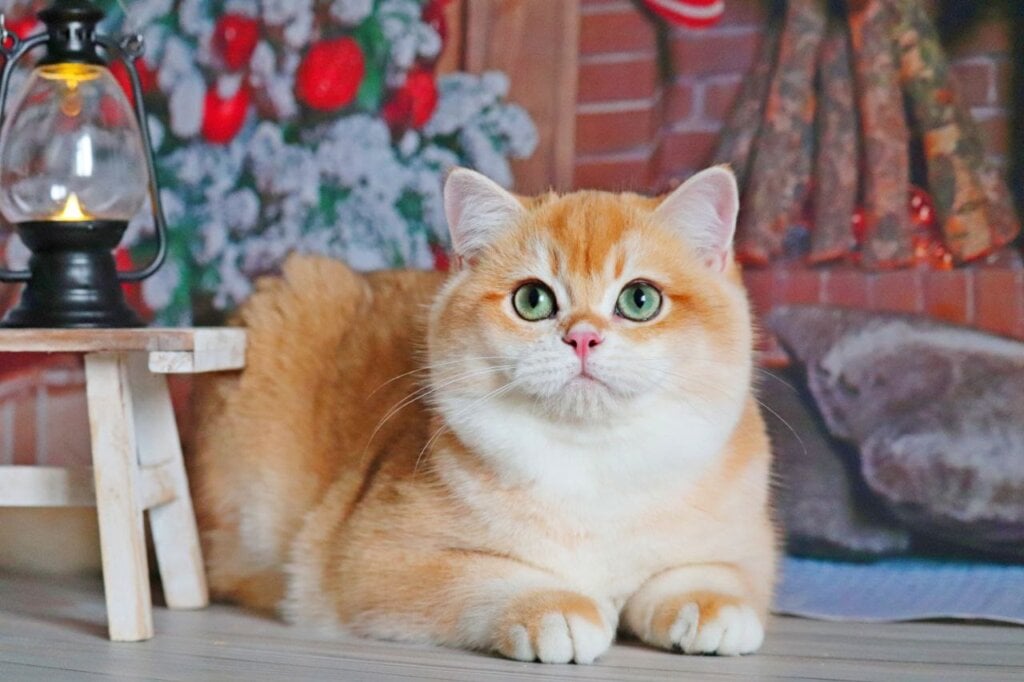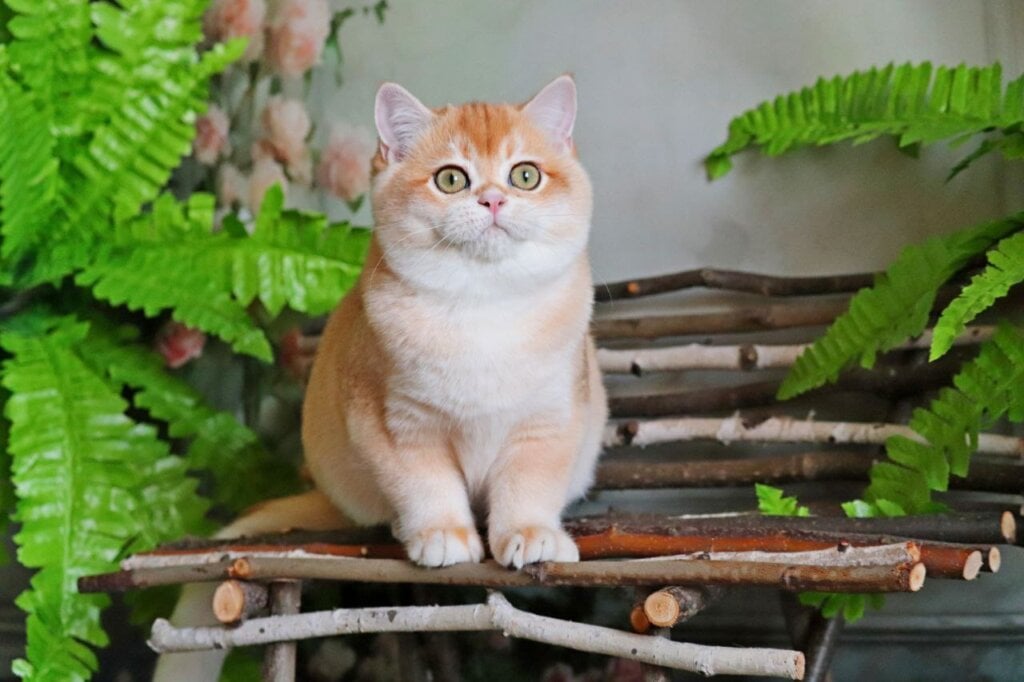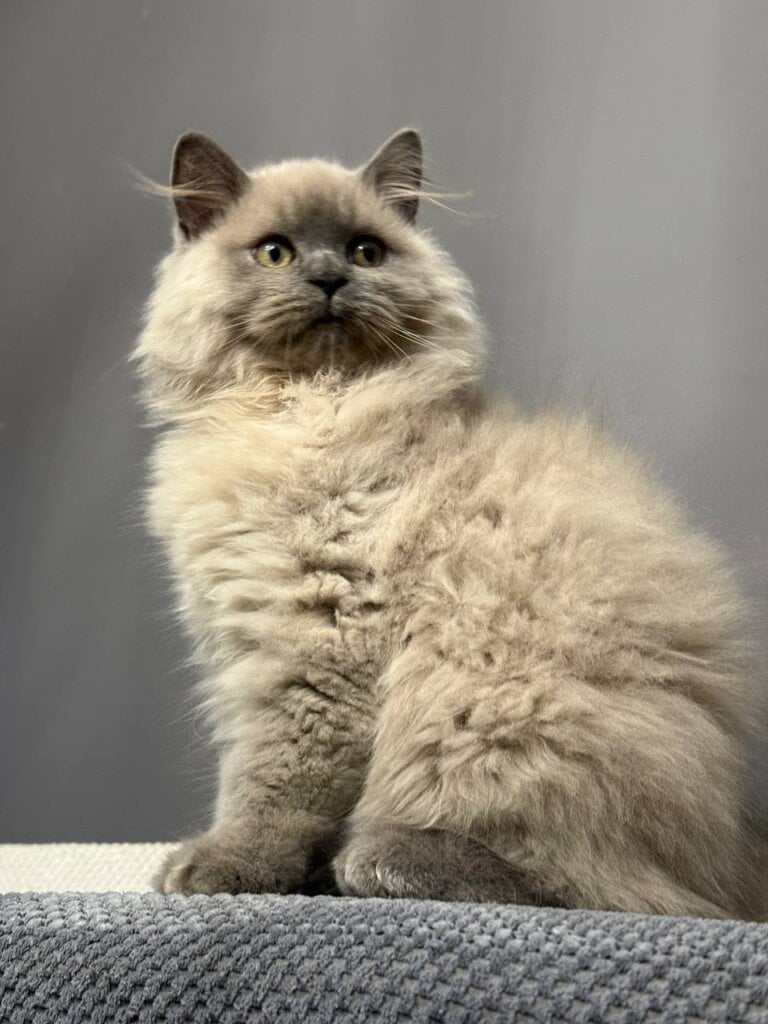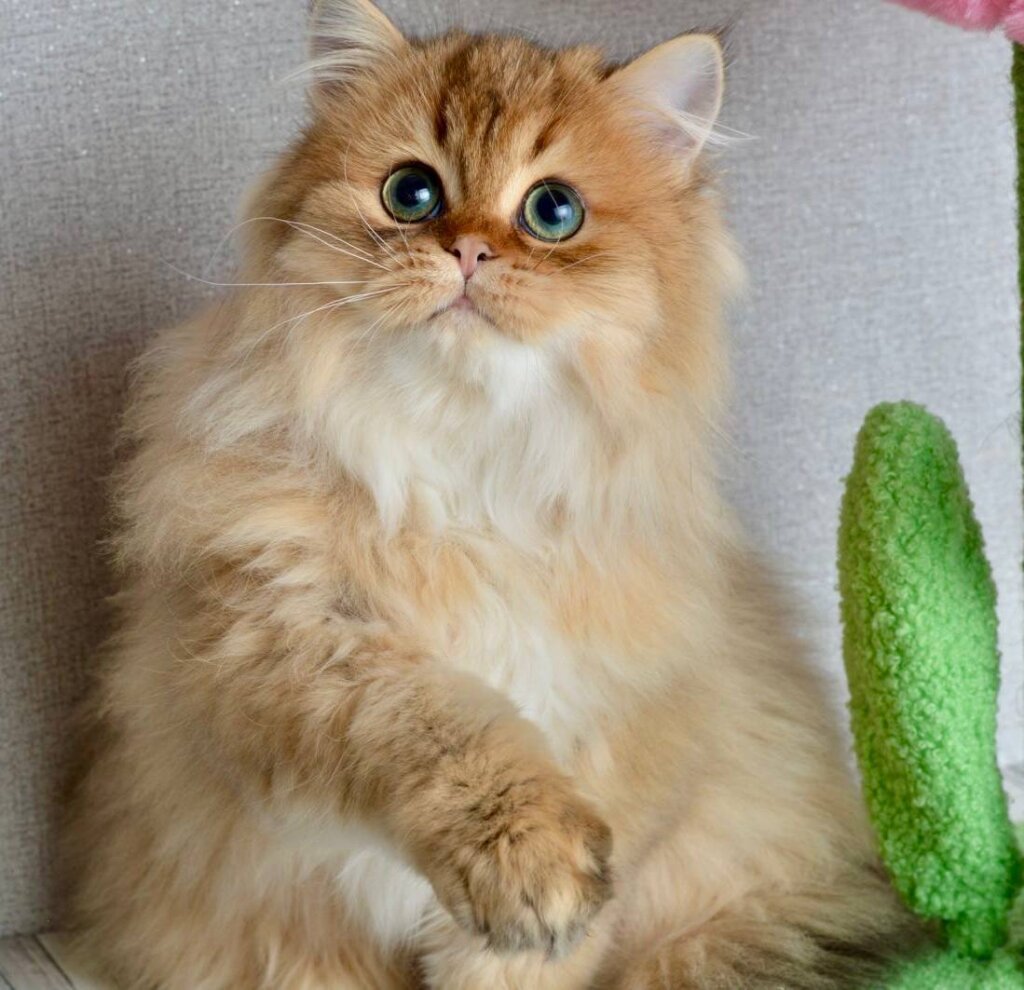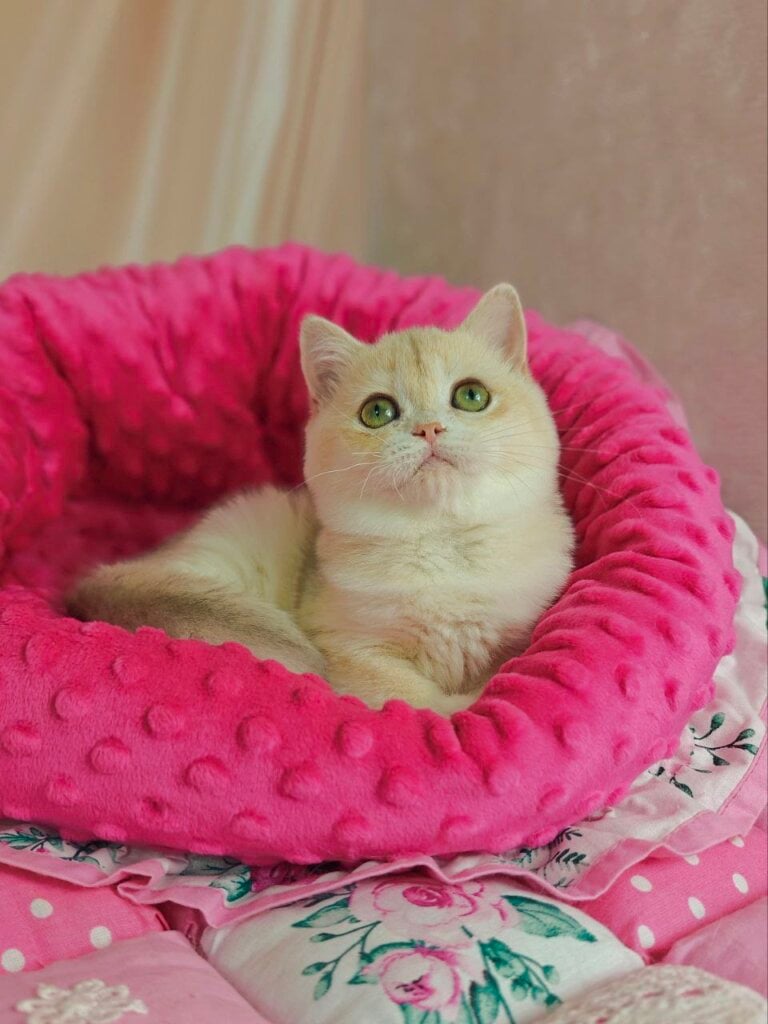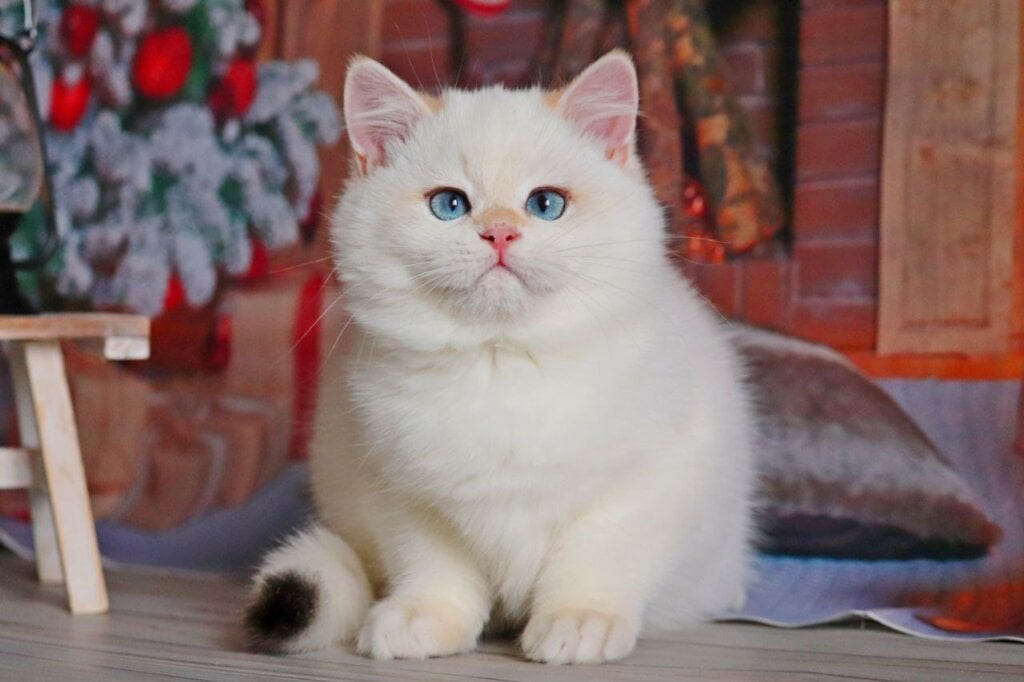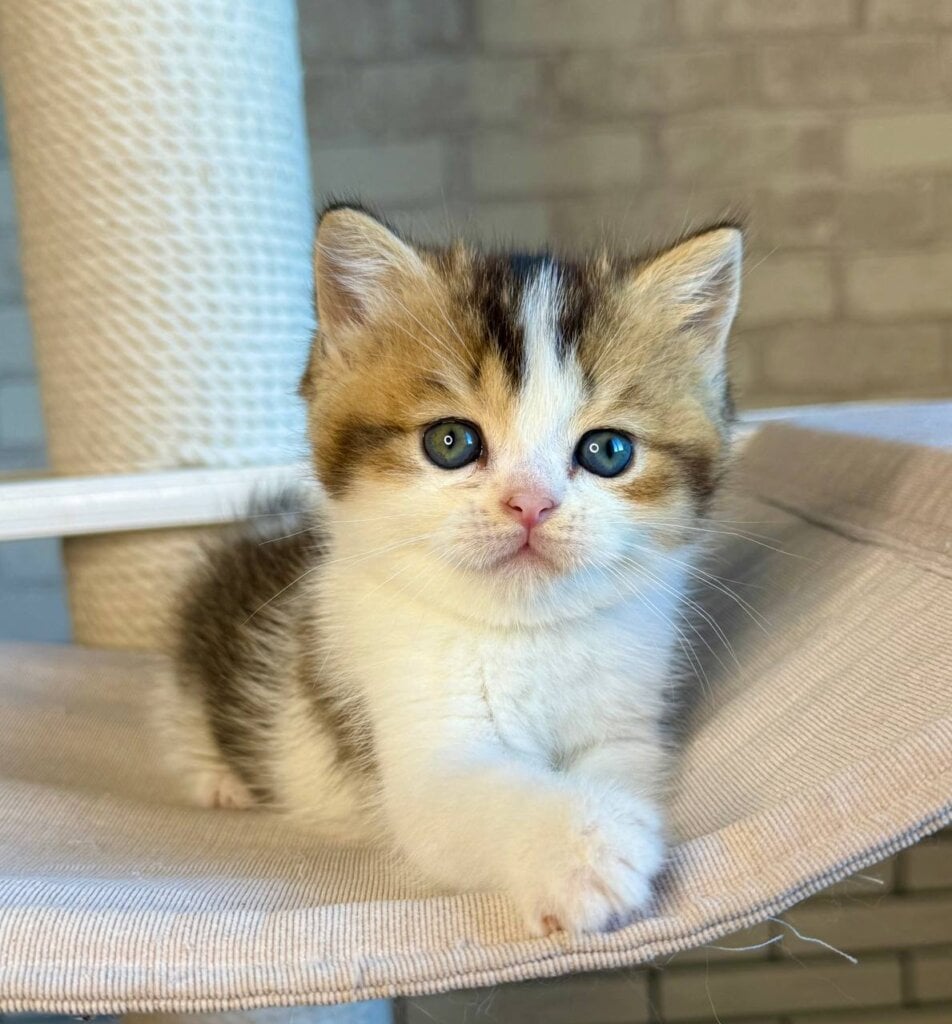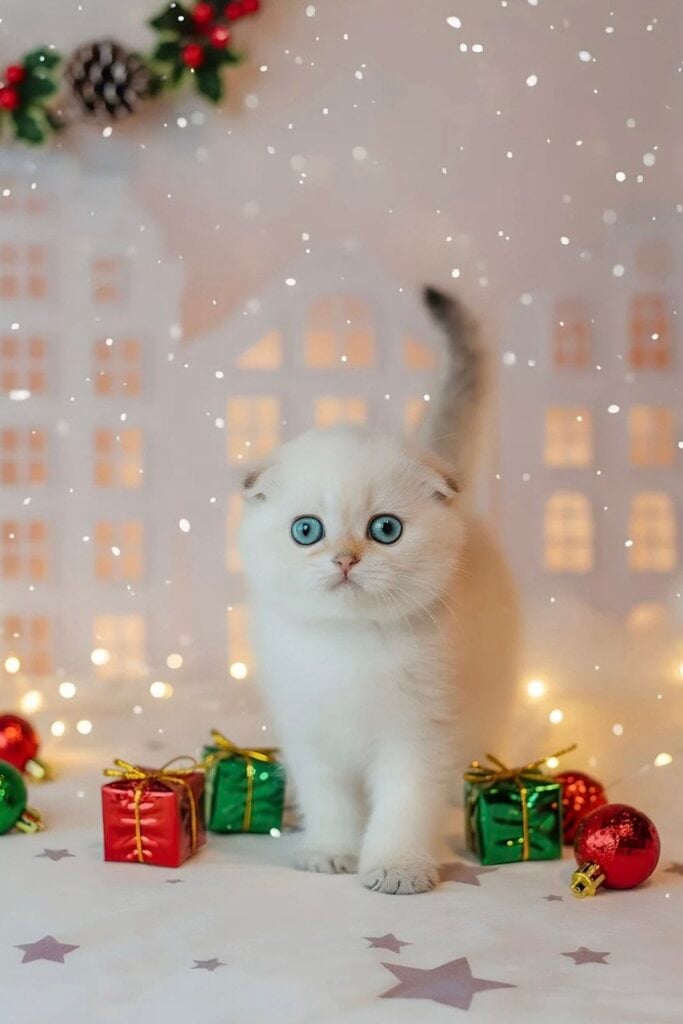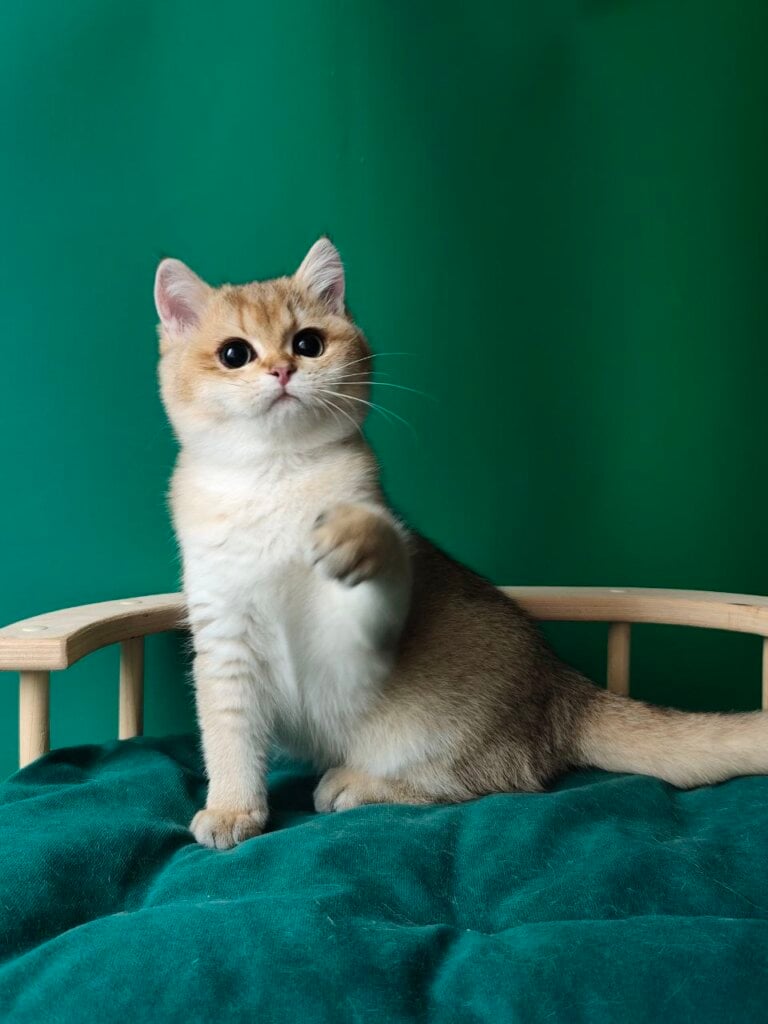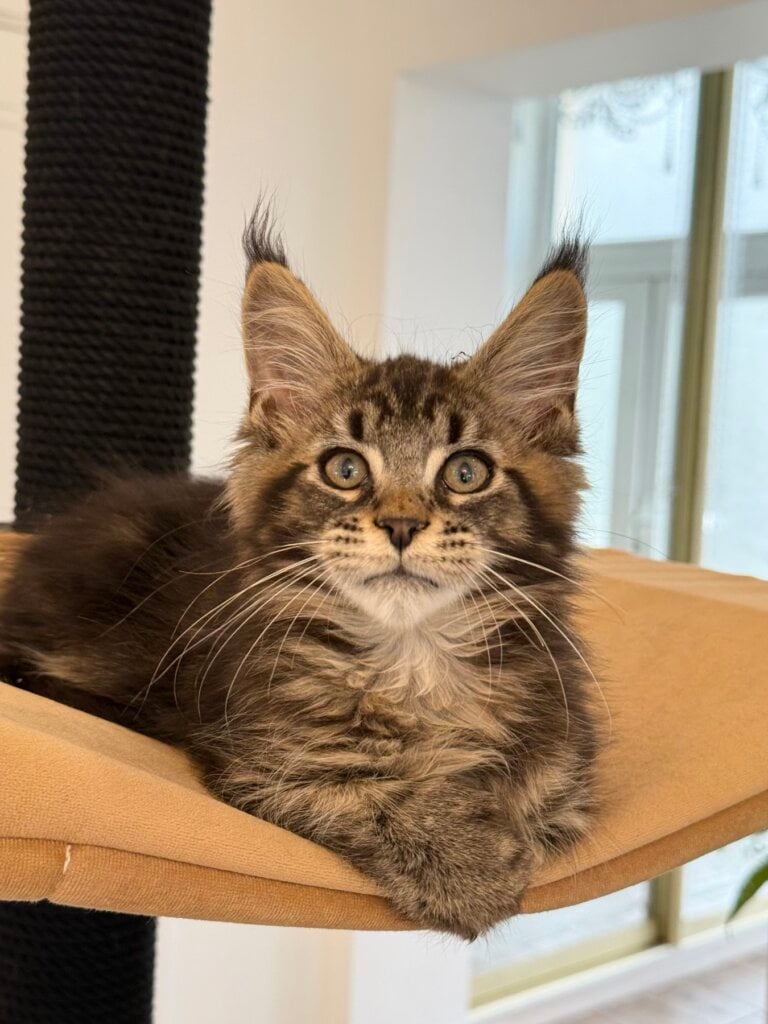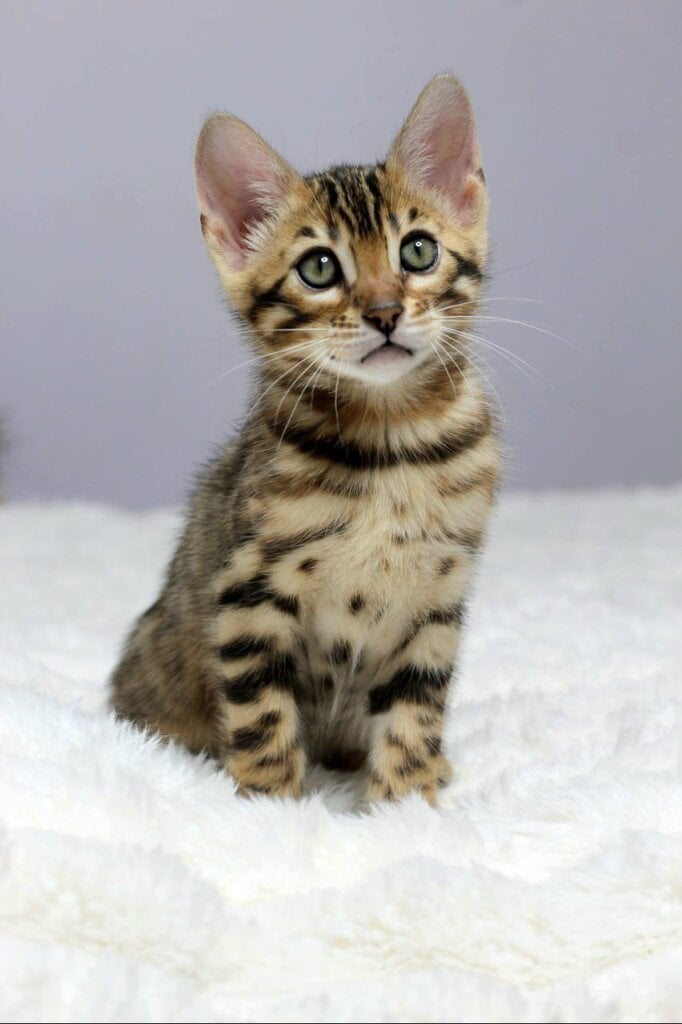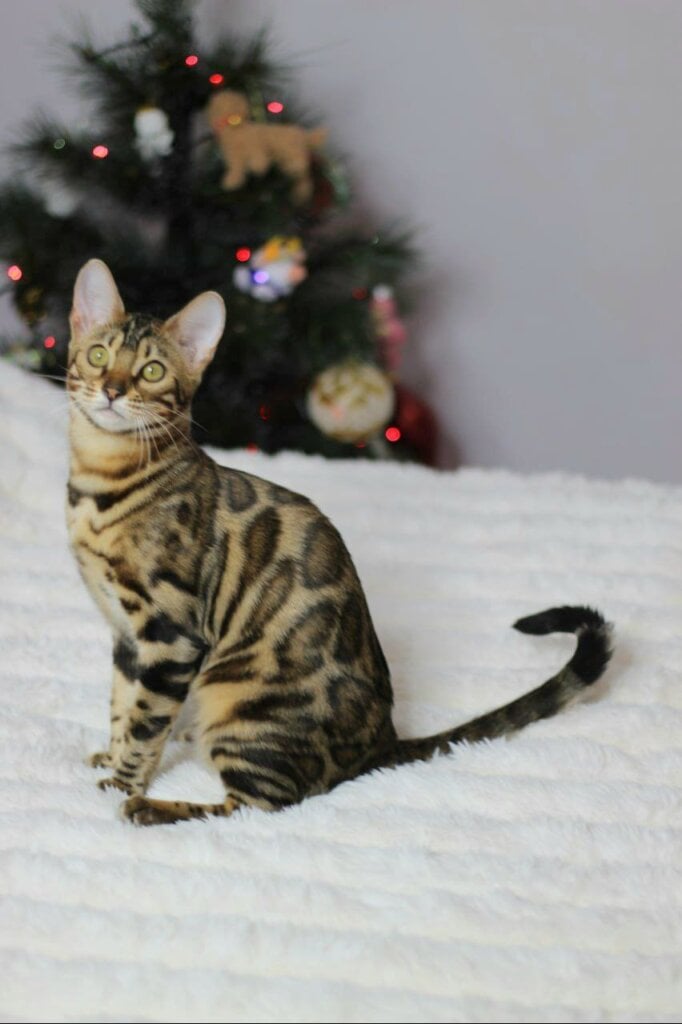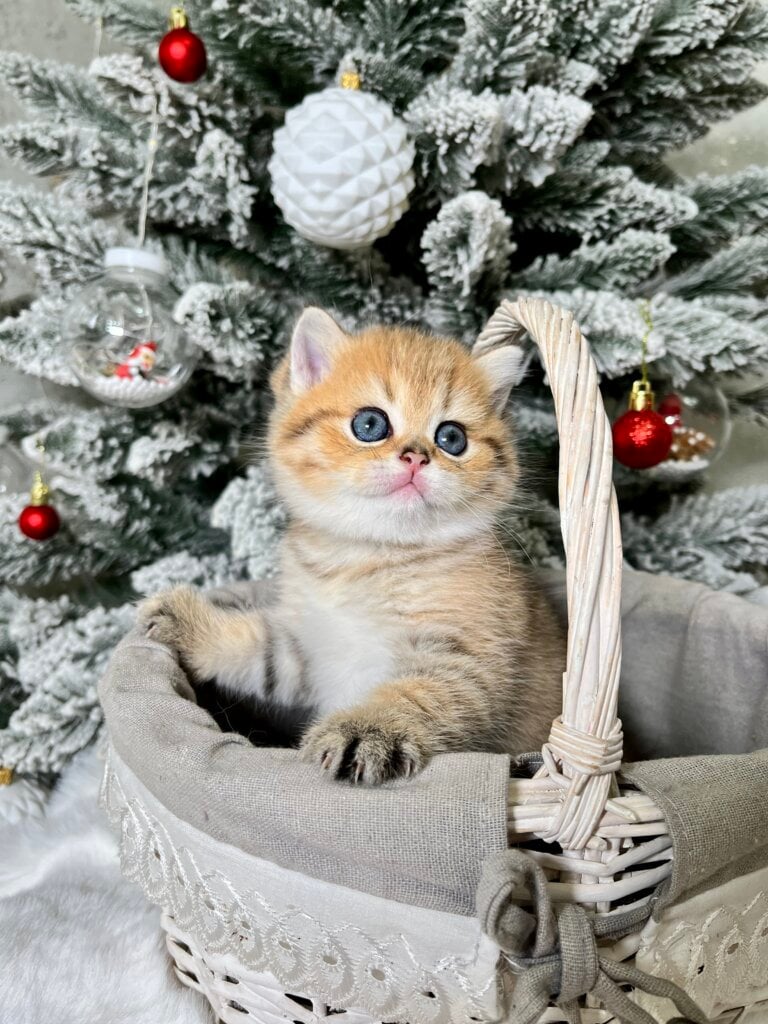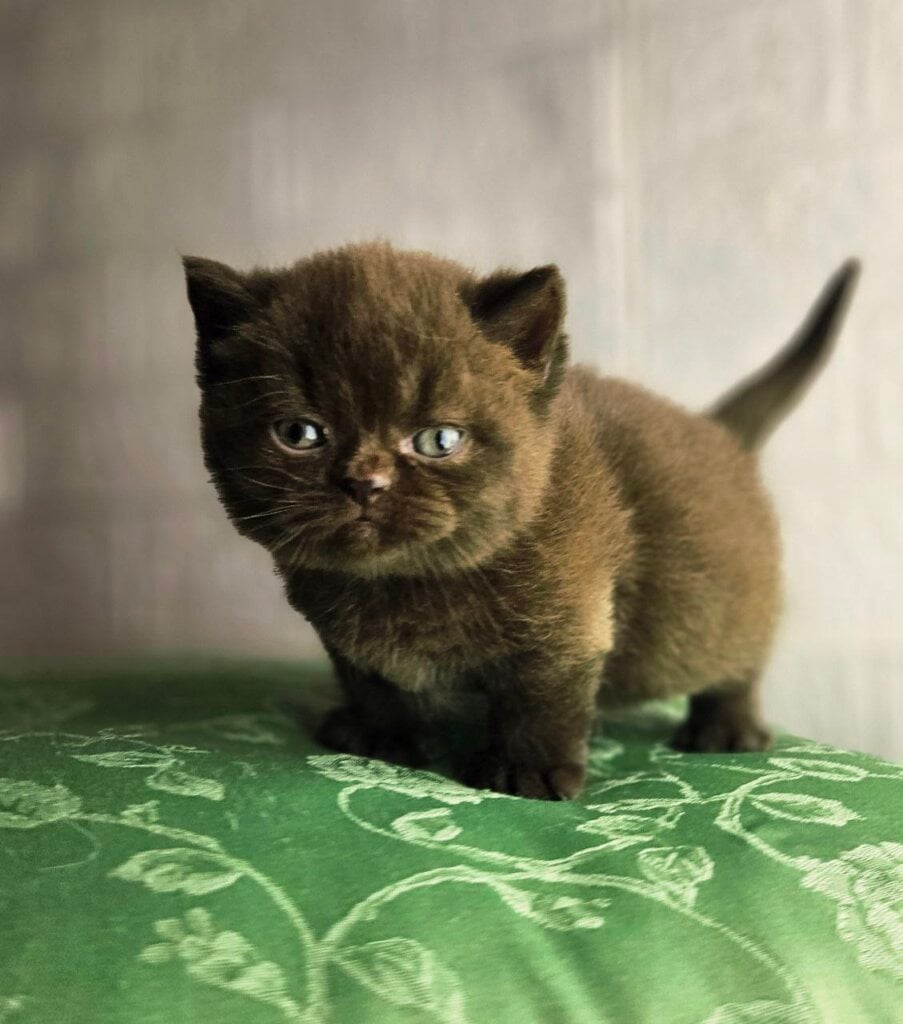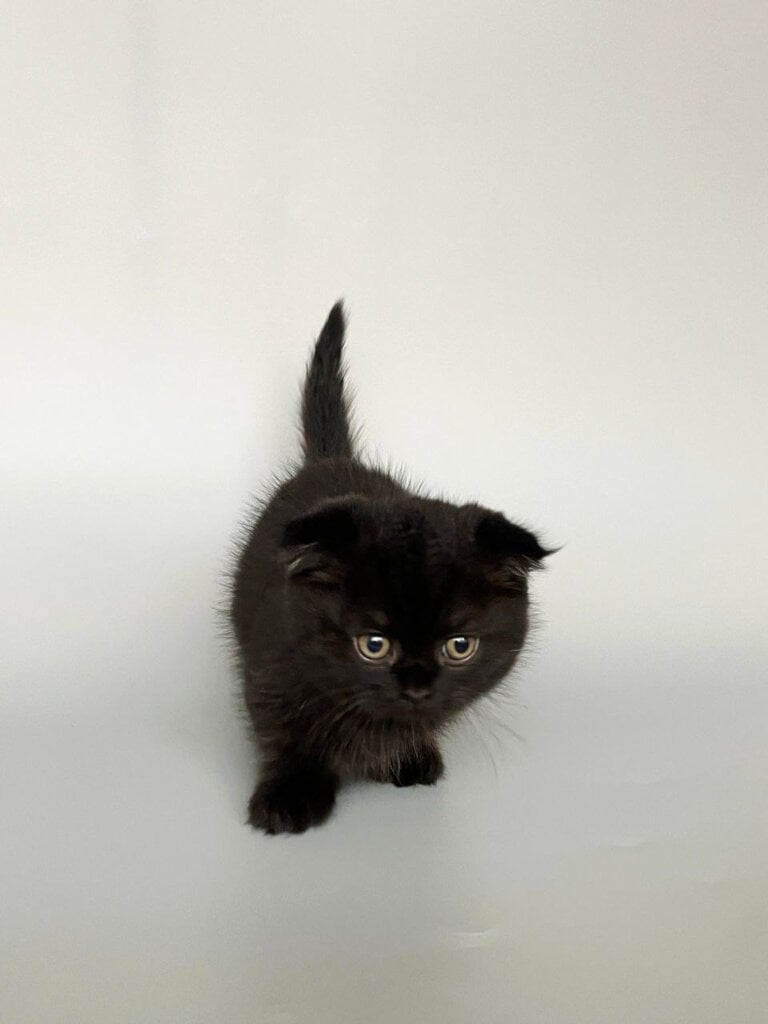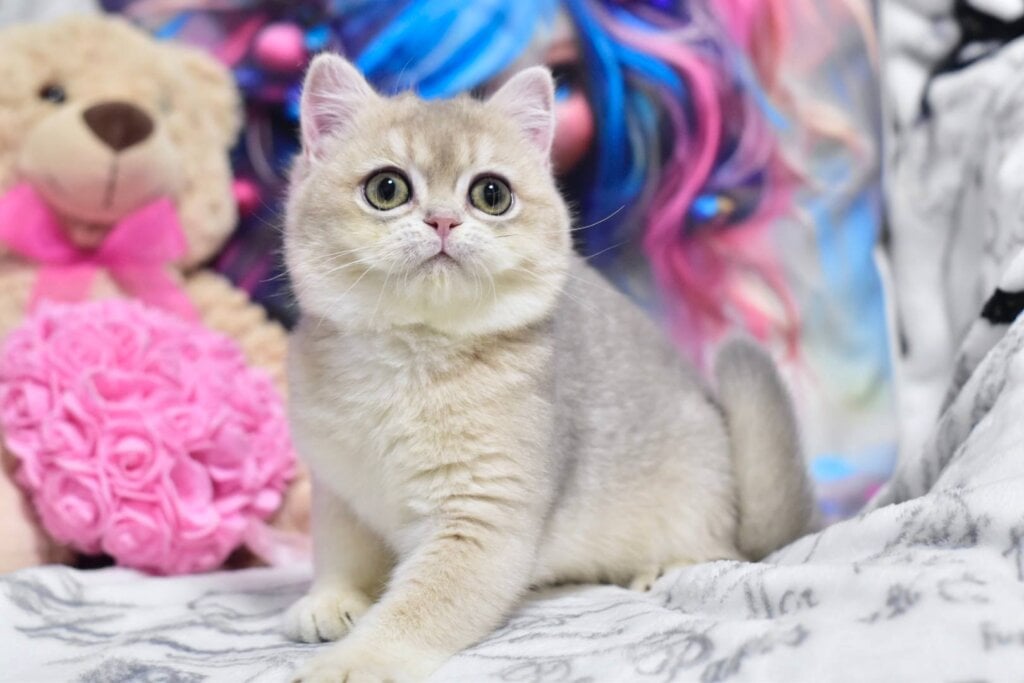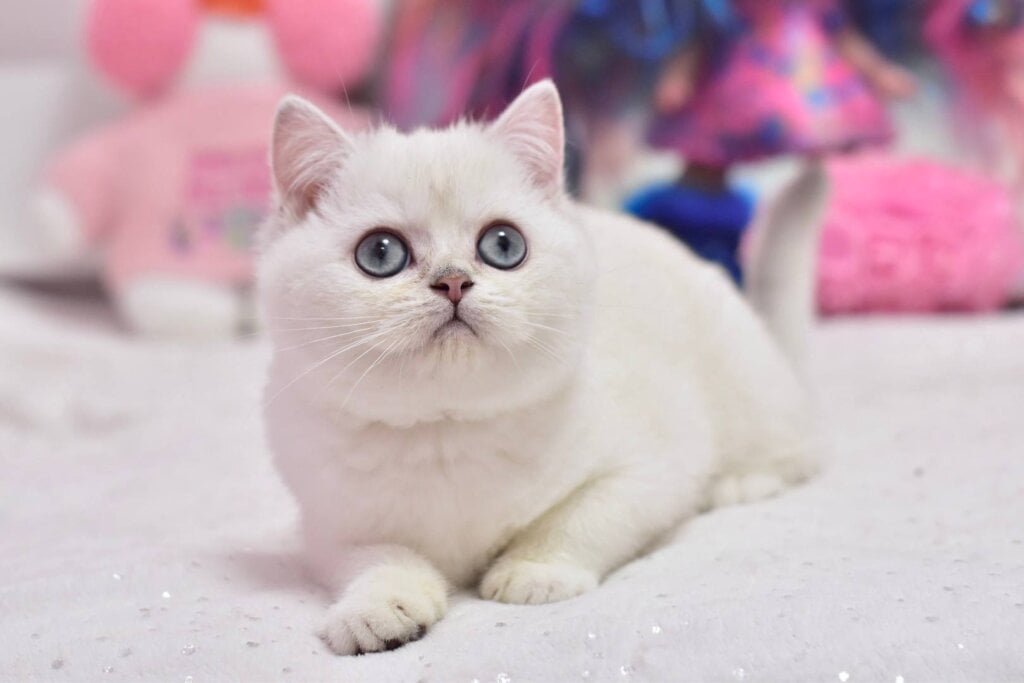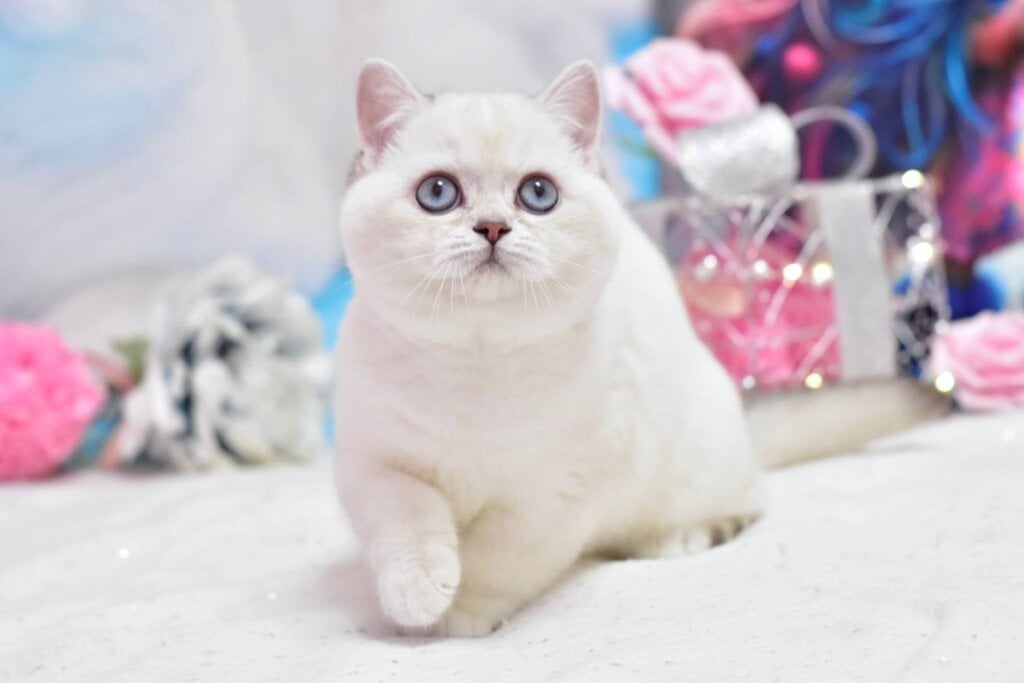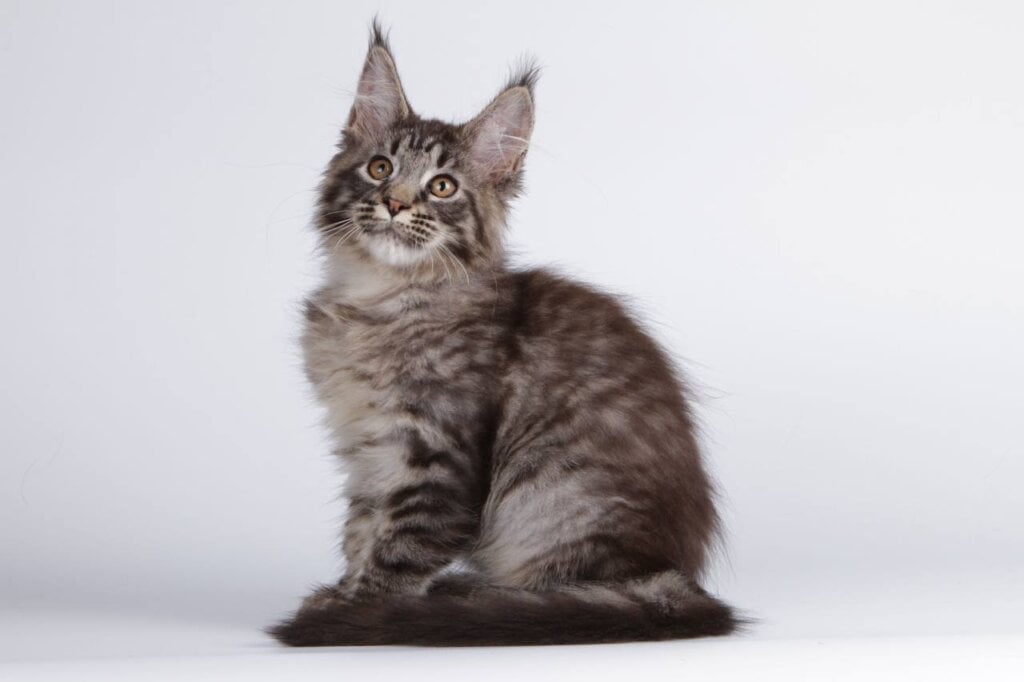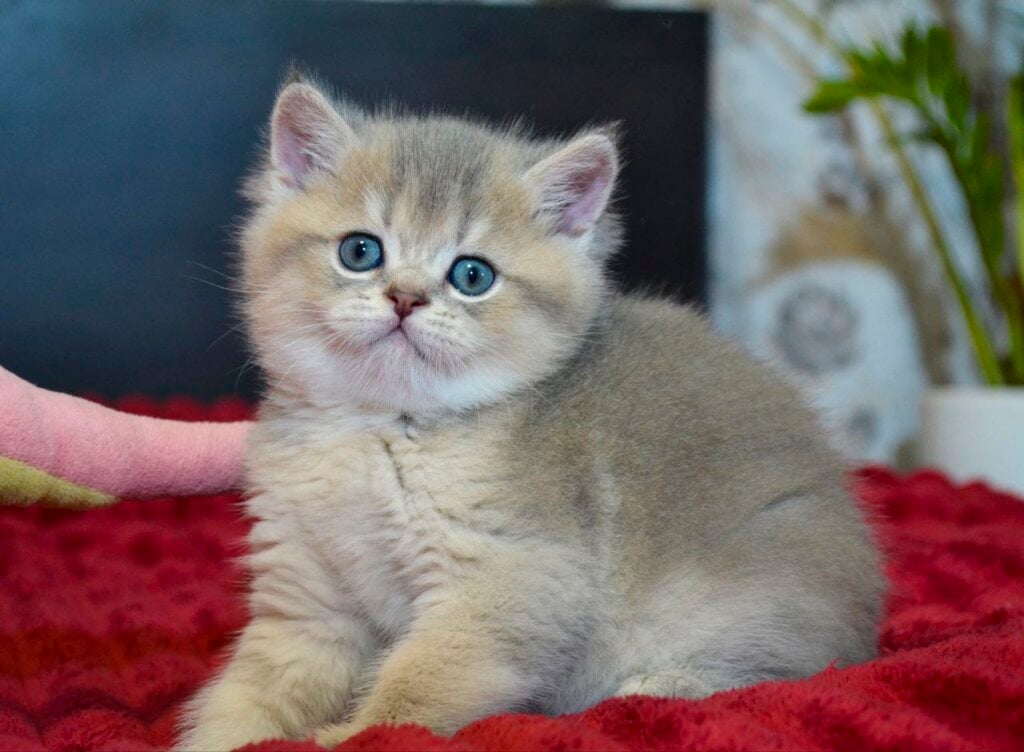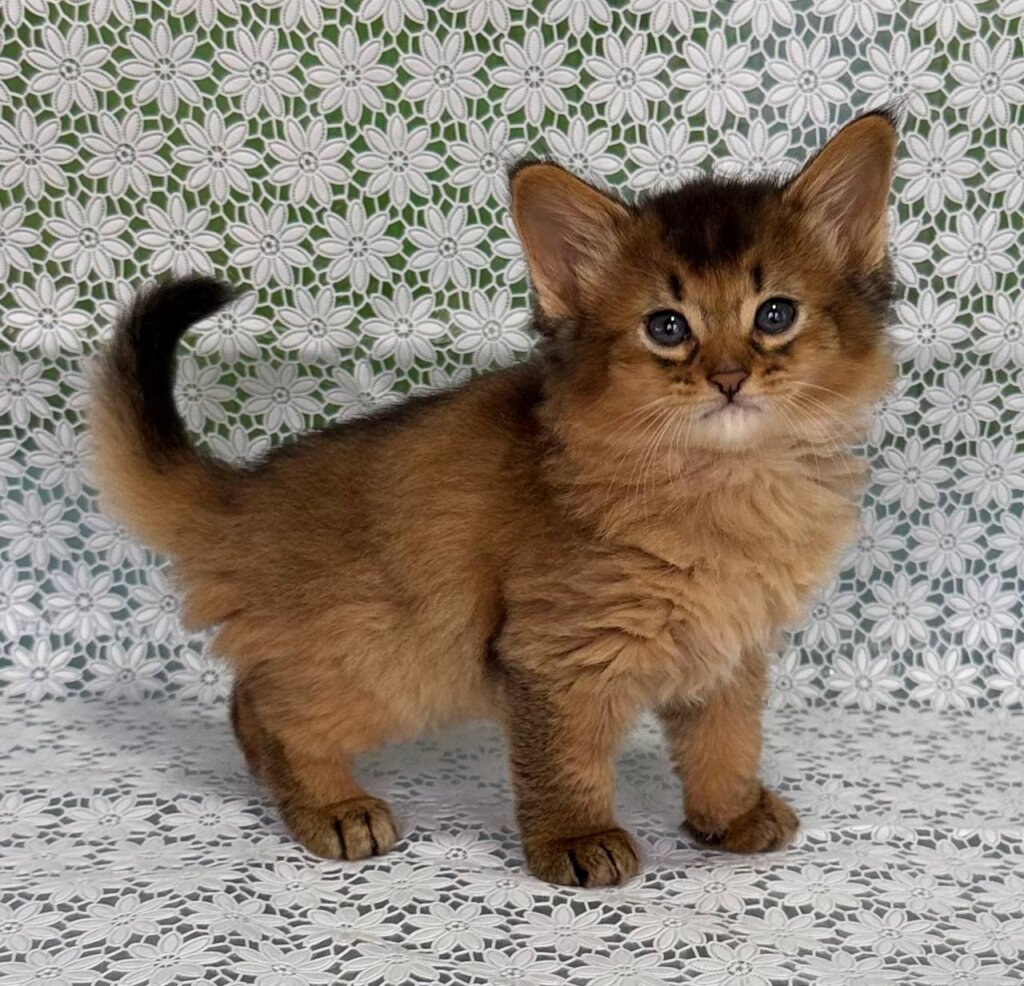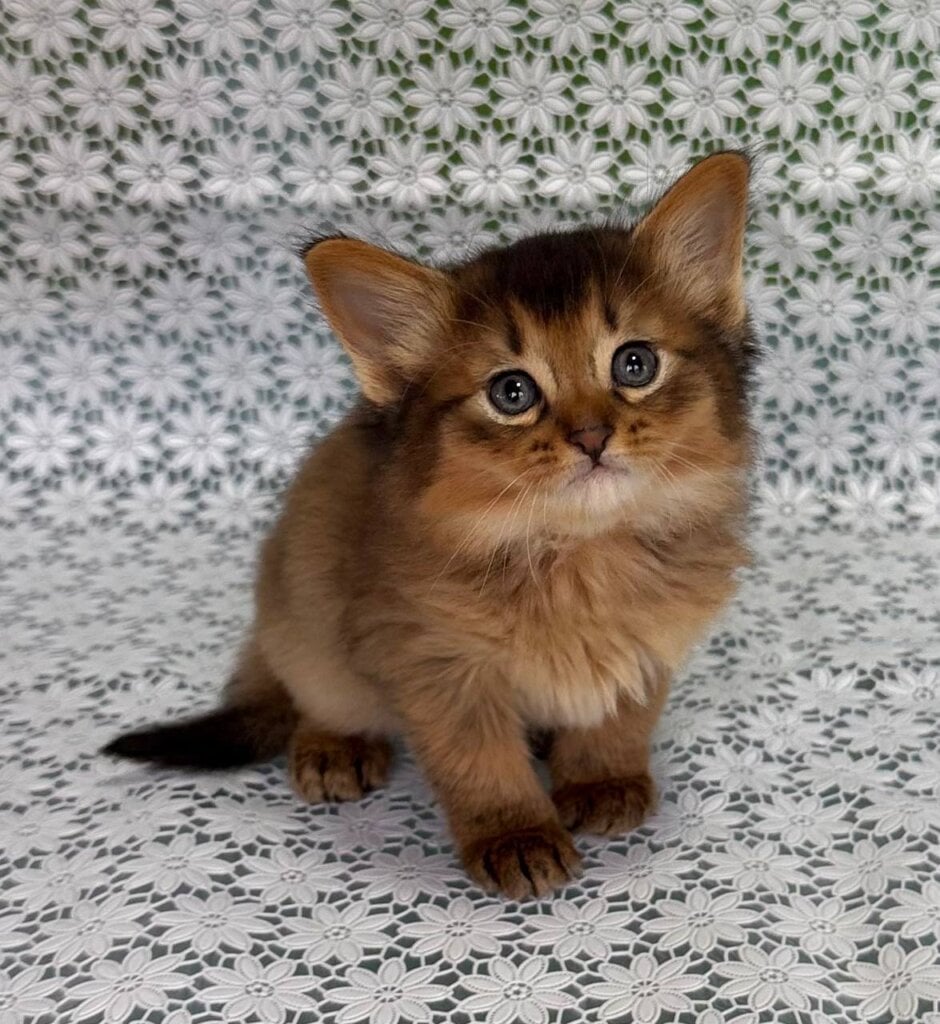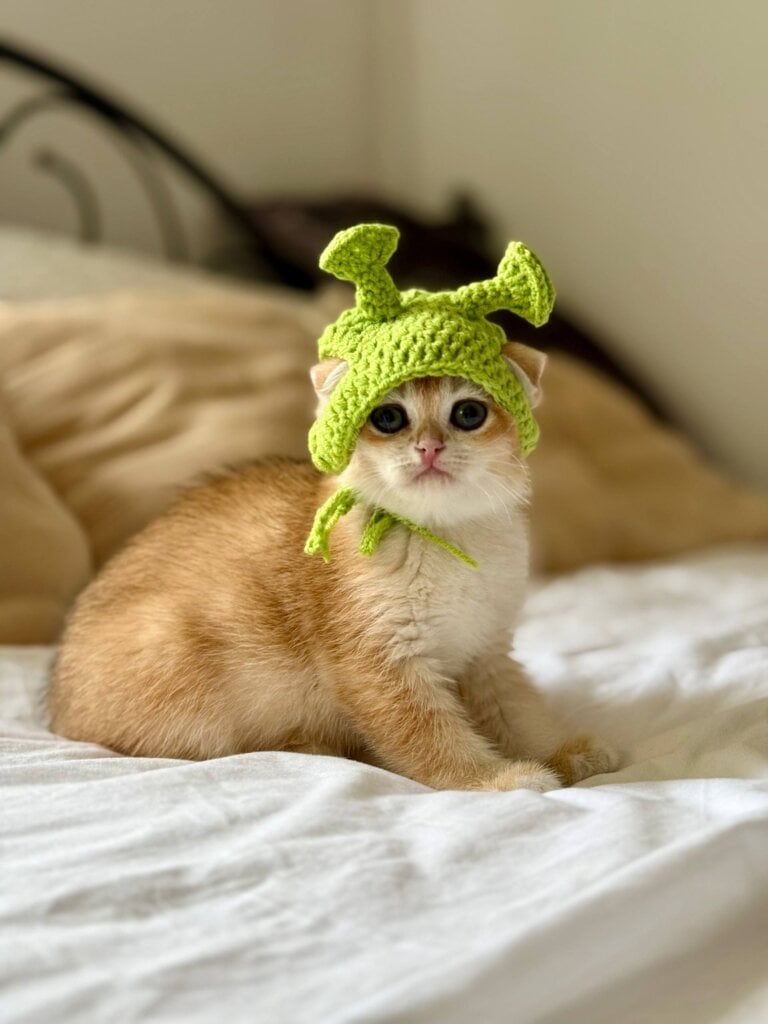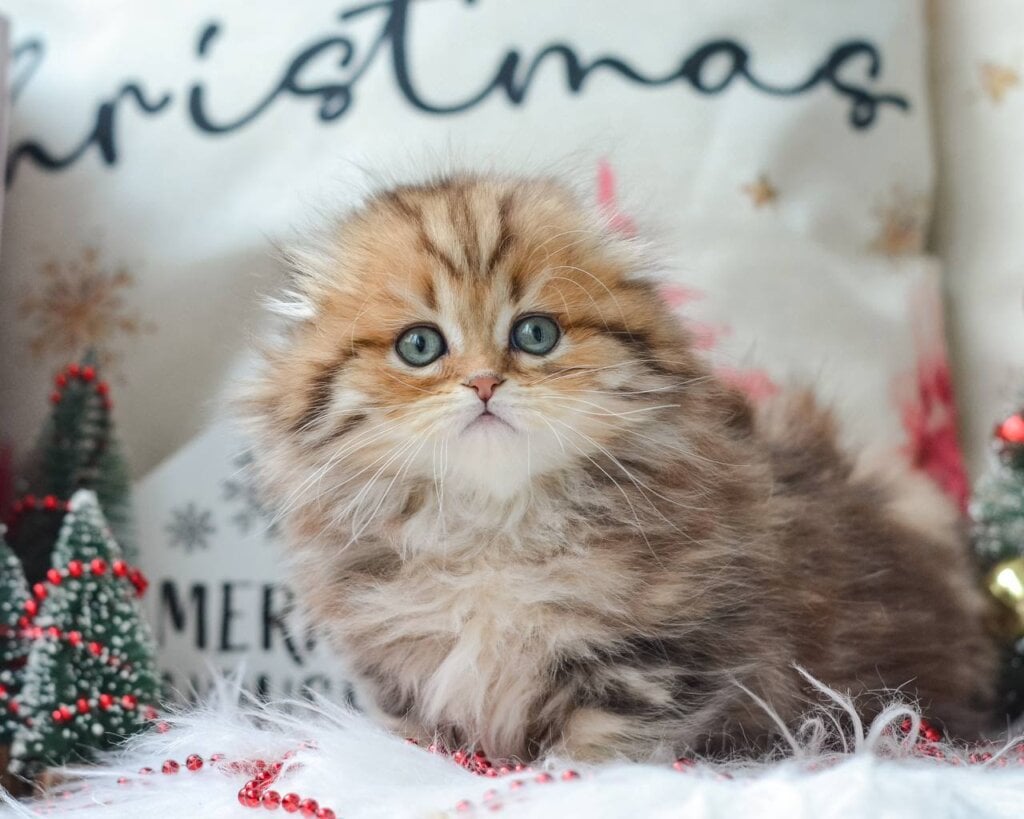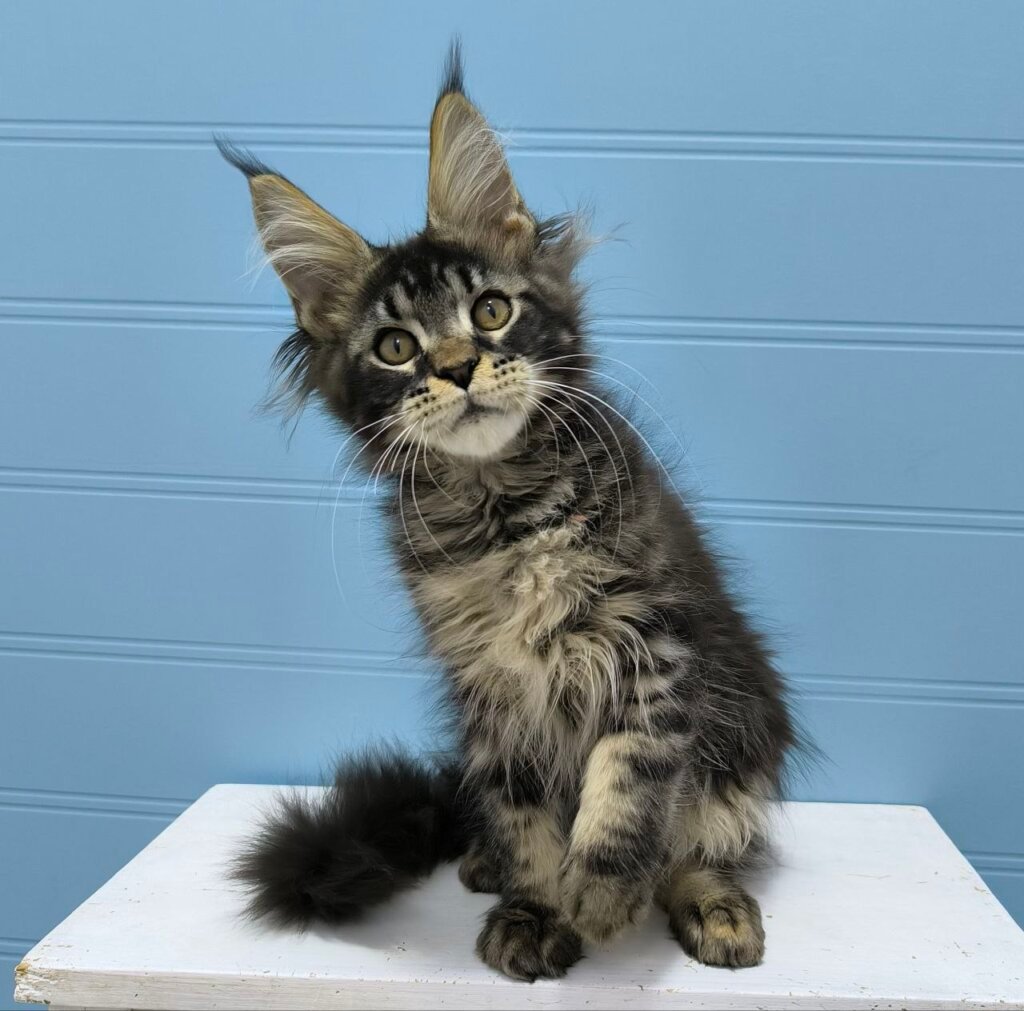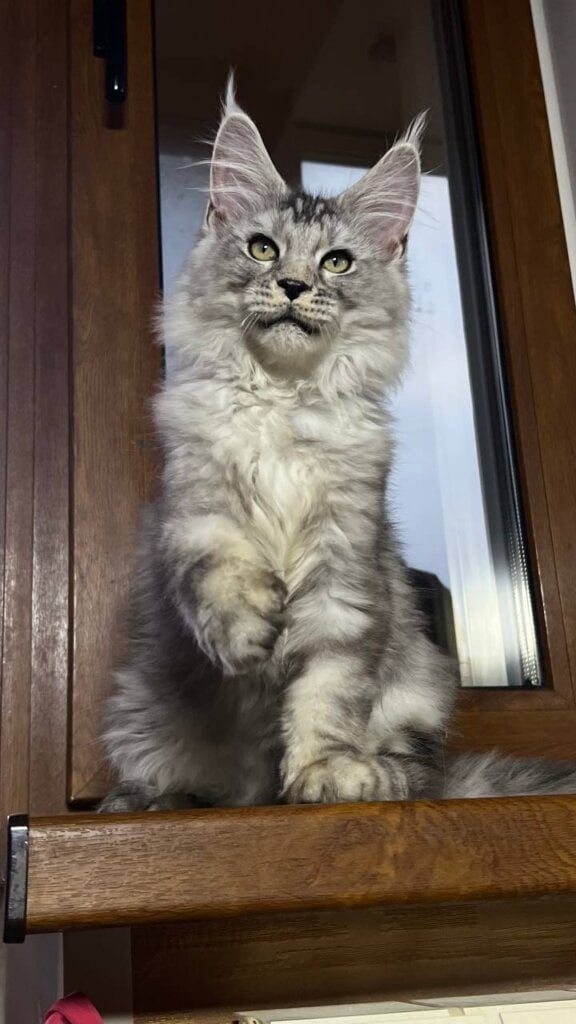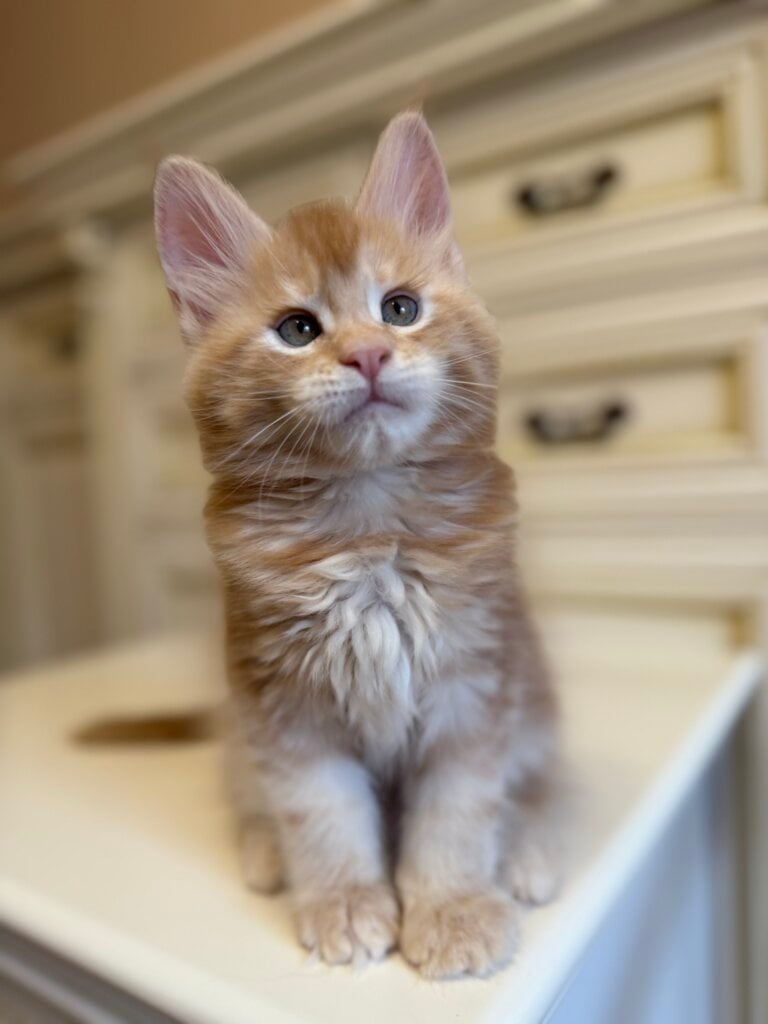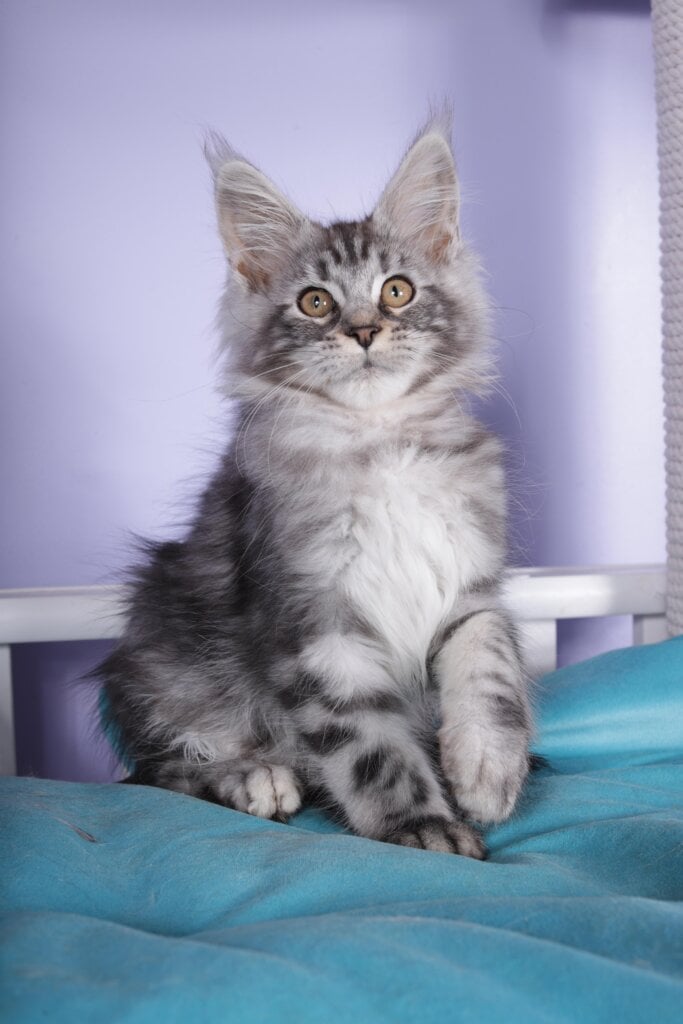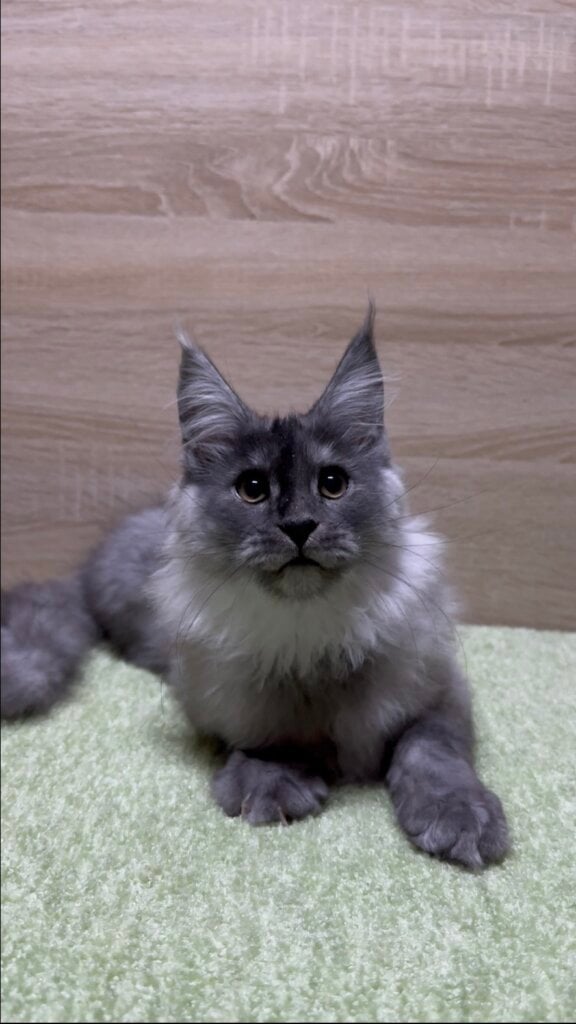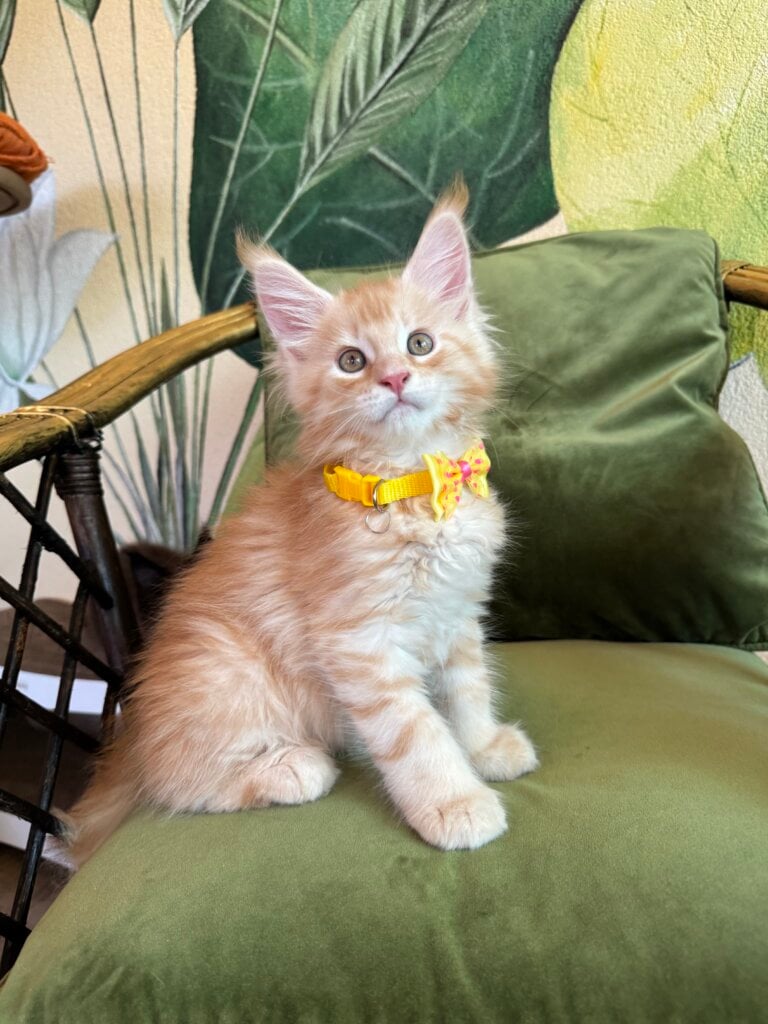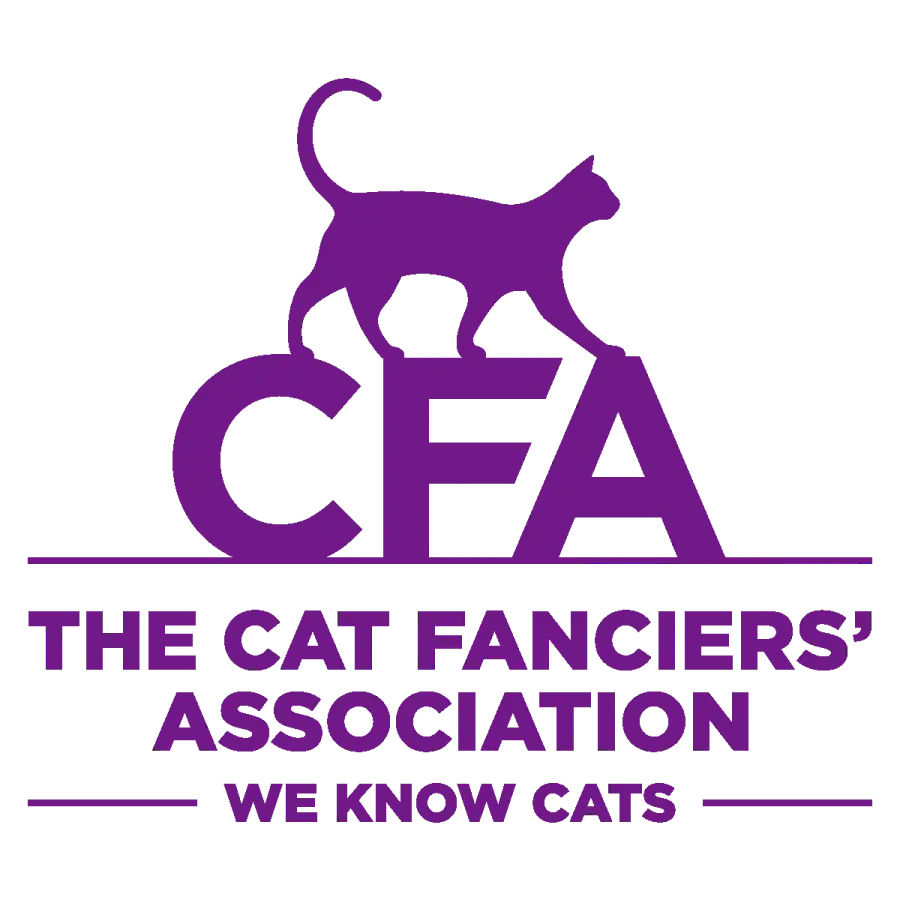Do Scottish Fold cats have long hair? There’s a long-haired variant, known as the Highland Fold, which has the same distinctive folded ears as its short-haired counterpart.
They’re both of the same breed stock but have varying hair lengths. Long fur is soft and dense, which provides them with a luxurious appearance.
MeoWoff partners with reputable catteries to provide nutritious, well-bred Scottish Folds, ensuring that families discover the perfect fit for their hearts.
Unpacking Scottish Fold Coats
Scottish Fold cats can be short or long-haired, both of which are breed standard. Understanding coat variations can assist prospective owners select a cat that suits their household and lifestyle. Coat length and texture influence grooming, appearance, and daily care requirements.
1. The Shorthair
Their shorthair Scottish folds have a sleek, dense coat that lies close to the body. Their coat requires minimal maintenance. Daily brushing, though, is recommended for animals with long hair. This type seldom mats and is simpler to care for, an excellent selection for hectic households or novices.
Shorthair Folds come in almost every color and pattern: tabby, solid white, blue, even bicolor or calico. Their sleek fur accentuates these markings beautifully and provides them with a sophisticated, sharp appearance.
2. The Longhair
Longhair Scottish Fold cats distinguish themselves with a luscious, flowing coat and fluffy tail. Longhaired Folds require more grooming. Brushing every 2-3 days prevents tangles, primarily around the legs, belly and behind the ears.
If you miss it, mats can develop and become painful or skin problematic. This extra fluff gives these cats a plush, rounded appearance-some of which is said to add to their appeal. Longhair coats can feature beautiful color combinations, with individual patterns revealing themselves more prominently due to the increased length of fur.
Longhair Scottish Folds tend to shed more – especially during seasonal shifts – so consistent grooming is crucial to maintaining their coat’s health.
3. Coat Texture
Scottish Fold coats are velvety soft to the touch, which entices pet aficionados. Shorthair varieties tend to be velvety and plush, whereas longhairs provide a more silken, cascading softness. This roughness affects how cats like to be stroked, and how convenient owners find it to groom them.
A softer coat usually translates to less drag while brushing and more bliss for kitty and human alike. The plush feel enhances the breed’s aesthetic, providing Scottish Folds with their iconic teddy bear appearance.
4. Coat Density
Coat density varies per type. Shorthairs are dense and plush but simple to brush. Longhairs are fluffier, with more undercoat, and require more work to maintain. In chilly locations, thicker coats do keep cats warm.
More fur means more brushing to prevent mats and tangles. Choosing the right brush and detangling spray can assist in making care easier.
5. Color and Pattern
Scottish Folds are available in a variety of colors. You’ll see all solid black, blue, white and creams or reds. Marks are tabby, bi-color, or even tortie. Genetics determine color/pattern, so littermates can look completely different.
Some colors or uncommon patterns may be in higher demand, occasionally driving up the demand for those kittens.
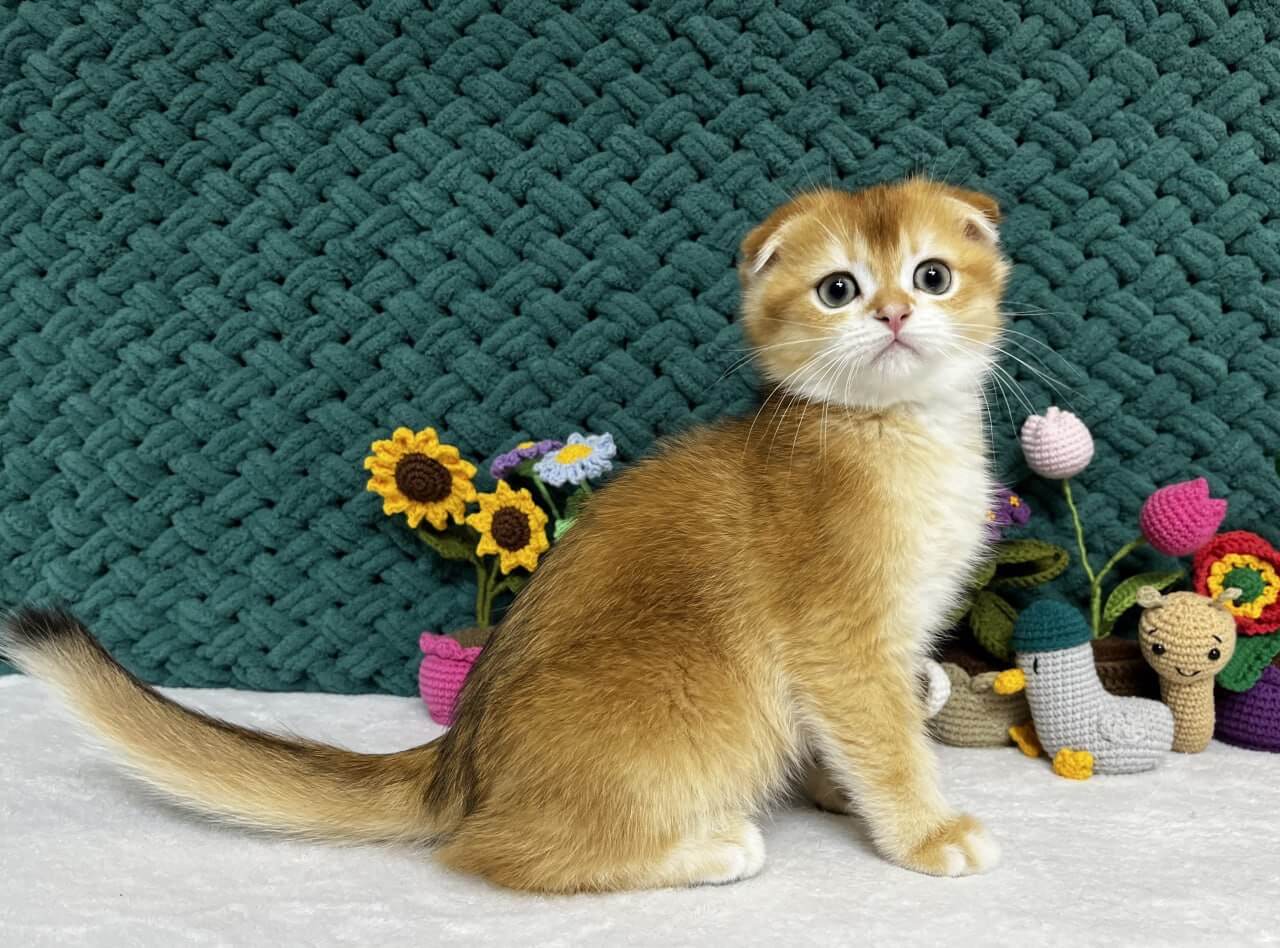
The Genes Behind the Fur
Scottish Fold cats can be short or long-haired and the answer lies in their genetics. Coat type, color, and the breed’s trademark folded ears all come down to the dance of dominant and recessive genes. Being aware of the genes behind the fur is essential for anyone considering adopting or breeding these cats, as it defines everything from health to appearance.
| Gene | Trait Controlled | Dominant/Recessive | Effect on Coat Type |
|---|---|---|---|
| Fold (Fd) | Ear folding, cartilage | Incomplete Dominant | Folded or straight ears |
| Longhair (l) | Coat length | Recessive | Short or long hair |
| Color genes | Coat color patterns | Varies | Tabby, solid, bicolor, etc. |
| Agouti (A) | Ticking in coat | Dominant | Ticked or solid patterns |
Dominant vs. Recessive
Dominant genes appear if just one parent has them. In Scottish Folds, the fold gene is incomplete dominant-a cat needs only one copy for folded ears, but the trait isn’t entirely full strength. Kittens with one fold gene exhibit the signature style, whereas those possessing two copies may experience more serious cartilage problems.
Recessive genes require both parents to pass them on. The longhair gene, for instance, means a Scottish Fold has to receive two copies in order to sport long fur. Breeders mate cats carefully to control these genes. If you’re not careful, mixing two fold genes can cause excruciating bone issues, so one parent is generally a Scottish Shorthair.
A fold-eared and a straight-eared parent can have both, but the longhair gene is recessive so both need to have it for their offspring to have it. This equilibrium is important to both kitten health and appearance.
The Fold Gene
The fold gene (Fd) that sculpts those adorable folded ears delivers health hurdles. Hocum to each Scottish Fold, this gene induces osteochondrodysplasia. They identified the mutation in 2016. Kittens are born with straight ears; folds appear at around three weeks old.
Even cats with one fold gene (heterozygous) can develop bone abnormalities, so breeders need to tread cautiously. The optimal breeding is a fold-eared cat with a straight-eared one, which creates 50% folded kittens and 50% straight-eared. Testing with British Shorthairs ensures that straight-eared cats don’t unknowingly harbor the fold gene.
| Fold Gene | Ear Shape | Health Risk |
|---|---|---|
| None (fd/fd) | Straight | None |
| One copy (Fd/fd) | Folded | Mild to moderate risk |
| Two copies (Fd/Fd) | Folded | Severe risk |
The Longhair Gene
The longhair gene is recessive, so both parents need to carry it for a kitten to be long-furred. This gene couldn’t care less whether a cat’s pedigree is 100% Scottish Fold or hybrid. That’s to say that purebred and mixed-breed Folds alike can have long, flowing coats as long as the gene is there.
Selecting the proper breeding pair is essential. Breeders seek out cats that fit the coat length and pattern desired, but screen for genetic health. Longhair Scottish Folds appear different-fluffy, velvety fur, known by some as the “Highland Fold.
These cats do require much more grooming, but many enjoy the appearance and texture.
Grooming Demands
Scottish Fold cats can have short or long fur, therefore their grooming requirements vary in accordance with their fur type. Both have thick, luxurious coats that have light shedding all year round and heavier shedding in the spring and fall. Consistent grooming is essential to their comfort and coat health.
Owners need to be prepared for moderate grooming demands, as some cats will require more frequent grooming during shedding.
- Weekly brushing should suffice for most Scottish Folds, though longhaired varieties require daily care.
- All Scottish Folds shed, but it becomes heavier in the spring and fall.
- Longhaired Scottish Folds require additional attention as they are more susceptible to tangles and mats.
- Nails, ears and dental care should all be a part of grooming demands.
- Proper grooming inhibits matting, controls shedding, and maintains a clean coat.
- Each cat might require more or less grooming depending on their coat and shedding habits.
Shorthair Care
Just brush a time or two week with a soft slicker. Wipe fur with a damp cloth to lift loose hairs. Check ears weekly for dirt or wax build-up. Trim nails every two weeks. Brush teeth daily with cat-specific products.
Easy grooming demands for shorthair Scottish Fold. Brushing once or twice a week clears away loose fur and reduces shedding. This is particularly vital during heavy shedding periods. Nail trims and ear cleaning on a regular basis is a must.
Be sure to watch for dry skin or balding. Even low-maintenance coats can conceal issues.
Longhair Care
- Brush coat DAILY with wide-tooth comb and slicker brush, concentrating on trouble spots such as behind the ears and under the legs.
- Bathe the cat once in a while (every few months) with a mild cat shampoo and follow-up with a conditioner to help prevent tangles.
- Clip nails once every two weeks and inspect ears for wax or debris once a week.
- Keep an eye out on the skin for redness, irritation, or mats. Longhair Scottish Folds are more likely to experience skin problems from trapped moisture and tangles.
Longhaired Scottish Folds require additional grooming attention. Daily brushing is the secret to keep mats and tangles at bay. Use light, consistent strokes and incorporate it into your daily regimen.
Watch for indications of irritation such as licking, scratching or immediate crankiness. These might signify mats or skin issues.
Essential Tools
- Soft slicker brush for shorthair, wide-tooth comb for longhair.
- Nail clippers designed for cats.
- Ear cleaning pads or solution.
- Cat toothbrush and toothpaste.
A grooming glove can assist in eliminating loose fur with either coat. Go for quality tools – they last longer and simplify grooming. Keep nail clippers and ear cleaning supplies handy at all times. Brush with a cat-specific toothbrush and toothpaste.
A Breeder’s Perspective
Scottish Folds are super-easy to identify with their folded ears. Breeders have some considerations on their coat. Coat type isn’t the only consideration, but it influences the choices breeders make. Longhair Scottish Folds are a thing, but they are far less common than the shorthair. Breeders juggle rarity, health and what future owners desire.
Rarity
Longhair Scottish Folds are uncommon. The majority of Scottish Folds you encounter possess that short, plush coat. The longhair variety-known as Highland Fold at times-is more uncommon. Not every breeder breeds longhair lines because the gene pool is smaller and arranging the right pairings is difficult.
Longhair folds are rare as the long fur gene is recessive. When two shorthaired Folds are bred, the majority of kittens will be shorthaired. To produce longhair kittens, one of the parents must be the bearer of the longhair gene. Most breeders want the standard short coat, so they don’t concentrate on longhair lines. This means fewer longhair kittens.
Scarcity frequently translates to a premium price. Customers who desire a longhair Scottish Fold may pony up and wait even longer. It’s a good idea for anyone interested in a longhair kitten to contact the breeders sooner rather than later and find out if any are due in upcoming litters.
Breeding Goals
Most breeders want healthy, well-adjusted Scottish Folds. They emphasize health, coat, ear shape and temperament. Coat type is only one piece, but it can differentiate a breeder’s program.
When selecting parents, breeders test for the longhair gene using DNA screening. They look at ear fold types: single, double, or triple. The proper pairings prevent joint issues and maintain the health of the breed. We often breed Scottish Folds with straight-eared cats for this reason.
Excellent breeders never place appearance above health. They want chill, friendly, low maintenance cats. Scottish Folds require frequent ear inspections as their folded ears can capture debris and become infected. Health and a sweet disposition are always priority #1.
Owner Suitability
Coat type counts for owners. Longhair Scottish Folds require additional brushing to maintain a smooth, mat-free coat. Shorthairs are easier for busy folks or first timers. Longhair kittens seem soft and adorable, but they can shed a lot more and require additional grooming.
There are families who adore the daily ritual of brushing a longhair cat. Some others just want a low-maintenance friend. Scottish Folds share that calm curiosity, but their grooming requirements differ. Breeders and owners should consider their schedule and care time.
It’s always smart to fit a cat to your needs. That way, everybody’s happy – cat and owner.
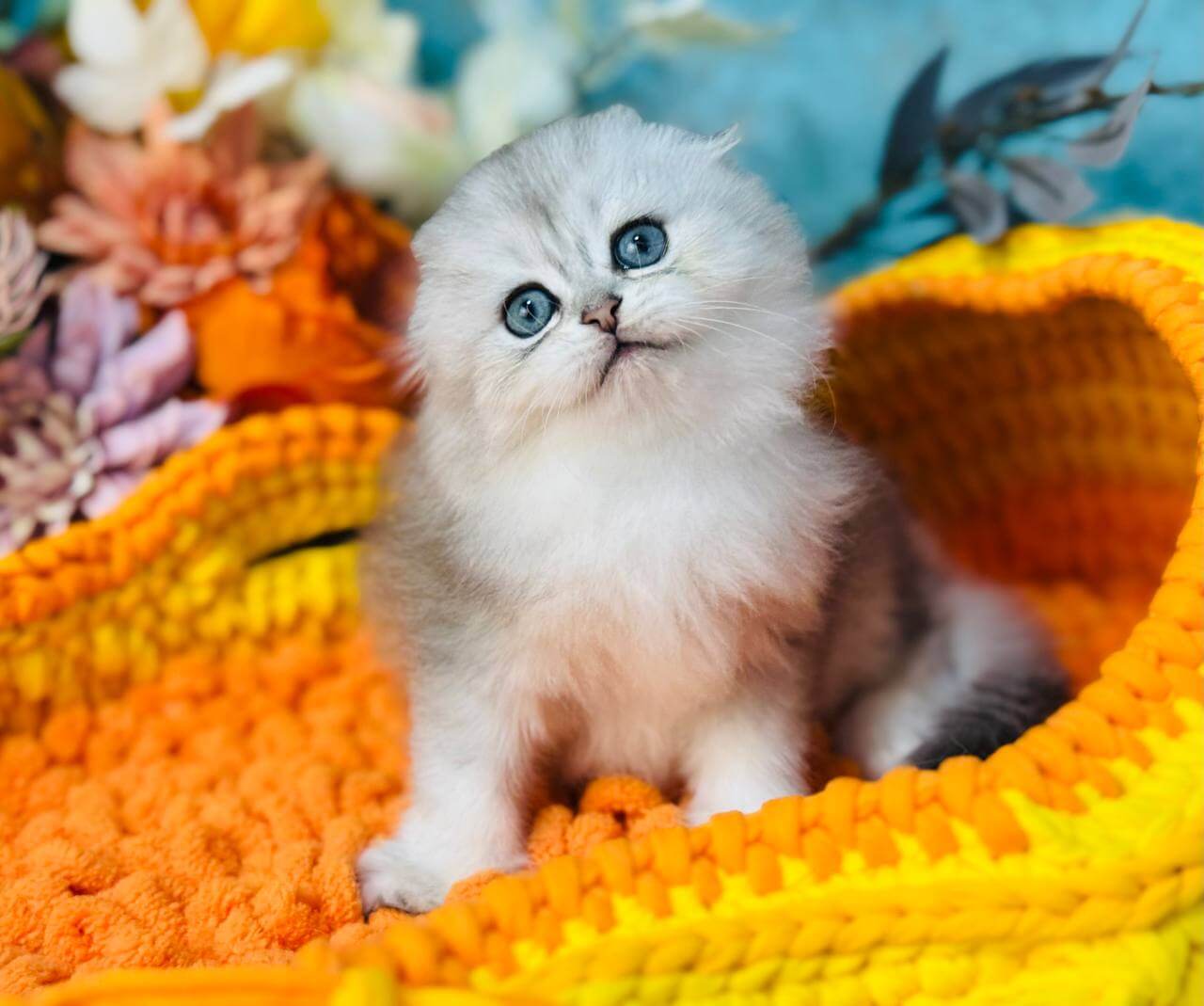
Health and the Coat
They have a plush coat that can be either short or long. Their health is often connected to the condition of their coat and skin. Typical coat problems may be early symptoms of larger health issues, particularly since this breed is genetically predisposed to them.
Routine maintenance-at home AND by a professional-goes a long way in keeping their skin, coat, and overall health in check.
Skin Conditions
Scottish Folds can get skin issues such as dermatitis, fungal infections or allergies. These can manifest themselves as itchiness, red patches or even hair loss.
A dry coat or scaly skin could indicate a health problem, such as a nutritional deficiency or early signs of a genetic disorder. As Scottish Folds are susceptible to osteochondrodysplasia, which is a disorder of cartilage and bone development, their skin and coat health occasionally mirrors distress or immobility from arthritic pain.
Arthritic cats may have trouble grooming some areas which results in dirty, oily, or matted hair. Monitoring for changes in their skin and coat is one method of catching health problems early. Diet is a big player-foods high in omega-3s can assist in maintaining the skin and coat.
Regular brushing washes away dirt and spreads their natural oils around, which prevents their skin from drying out. If you observe sores, swelling or persistent redness, it’s wise to consult a vet immediately. Early intervention can make a huge difference.
Matting Risks
Longhair Scottish Folds are prone to mats and tangles that can develop if grooming is overlooked. Mats can be painful and sometimes cause sores if they tug on the skin.
Occasionally, mats mask ulcers or infections that require attention. Brushing once a week is necessary for all Folds, but the longhaired variety may require more frequent sessions, particularly during spring and fall shedding.
If mats form, use a wide-toothed comb or a mat splitter, and be careful to work slowly to prevent injuring the cat. Never use scissors to cut mats near the skin-mistakes are all too common. If the mat is too tight, consult a groomer or vet for assistance.
Parasite Prevention
Every Scottish Fold requires regular parasite prophylaxis, regardless of coat length or type. Long, thick coats can complicate checking for fleas or ticks, and even topical treatments don’t always so easily reach the skin like they do on shorthaired cats.
A clean brushed coat is not only attractive but it keeps the parasites away. Inspect your cat’s coat every week for fleas, ticks or even flea dirt. Apply vet-approved preventatives appropriate to your cat’s weight and health.
Beyond the Coat
Scottish Folds could be short or long-haired, which influences more than just their appearance. Both physical and lifestyle factors have a huge impact on the way these felines live, play and connect with their humans.
Temperament
To that end, grooming routines tend to form a Scottish Fold’s mood and behavior. Longhaired Scottish Folds require daily brushing and shorthaired ones weekly. This hands-on time can soothe some cats but traumatize others, particularly if not begun early.
Highland Folds, with their lengthier coat, require combing a minimum of two times a week to keep mats at bay. Routine ear checks are key as well because folded ears can trap dirt. When owners turn grooming into a positive component of the routine, it can help cats feel safe.
Socialization is just as important. Cats who are handled frequently and exposed to various people and animals during their early stages of development tend to be more amiable and laid back. Each cat is individual, and coat type is only one factor in personality.
Certain longhaired Folds are boisterous, some are docile. Ditto with shorthair cats. Owner interaction – such as play, grooming and tender talk – fosters trust and builds a cat’s inner best self.
Physical Build
Scottish Folds appear to be round and sturdy with strong frames and thick tails. Their velvety, velour coats-both long and short-don’t hurt either. Coat length can change how they look: longhaired Folds seem fluffier, while shorthairs show off their muscles more.
Regardless of coat, these cats are vulnerable to osteochondrodysplasia – a hairy name for bone and cartilage abnormalities. That’s why maintaining a healthy weight is crucial. Too much weight stresses their joints.
A combination of play and light activity, such as scaling furniture or pursuing toys, keeps them in shape.
Lifestyle Impact
Coat style counts in daily living. Busy families might find weekly brushing a shorthair Scottie Fold easier to accomplish than the daily attention a longhair requires. Highland Folds with long coats typically require more care, particularly when it’s shedding season.
If you’re busy, a shorthaired Fold may suit you better. For those who relish grooming and bonding time, a longhaired Fold can be a delight. Weekly nail trims and ear checks are needed for all, but outdoor cats could require nail trims more frequently.
Consider your schedule, energy and family habits before deciding.
